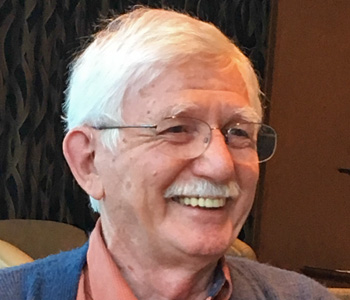Torben Grodal
Embodied Visions: Evolution, Emotions, Culture, and Film
Oxford University Press
336 pages, 9 x 6 inches
ISBN 978 0195371314
ISBN 978 0195371321
Embodied Visions is a pathbreaking explanation of how films are crafted to activate innate features of our brains and bodies. The book is based on cutting edge neuropsychology and evolutionary psychology.
In the first part of Embodied Visions I show how the evolutionary history of humans and their mammal ancestors influences our preferences for certain types of narratives and themes, and how filmmakers create fascinating stories by appealing to these innate dispositions. I show how, for survival reasons, films for children focus on attachment to parents and on honing awareness of dangers. I also describe the evolutionary reasons for the preference for love stories, and explain why men are more interested in pornography than women.
Embodied Visions further describes how preferences for violence and hide-and-seek themes reflect our prehistoric survival needs. It is brain mechanisms that make supernatural stories like fairy tales and horror stories highly interesting; I describe these in the book, and also discuss why we are even interested in sad films. Sad films provide vital information of hazards and they also help create strong social bonds, for instance related to male bonding in war films.
The second part Embodied Visions is about how the architecture of the human brain explains central aesthetic features of films. The point of departure is to describe how we process films by means of what I have called the PECMA flow—short for “Perception, Emotion, Cognition and Motor Action.” I also discuss the brain mechanisms by which we simulate characters, for instance by means of so-called mirror neurons, that induce us to simulate emotions and actions of other people.
The flow model explains how sight and sound, say the sight of a wolf approaching a character, trigger emotions, which in turn trigger cognitions about what to do, which are then implemented in actions—running, hiding or fighting. Viewers continuously simulate the flow in empathy with characters. The book shows how stories are crafted to provide fascinating PECMA flows, as well as how art films violate the flow processes to create sophisticated aesthetic effects. Finally I describe the mechanisms that provide viewers with a sense of realism, as well as the ones filmmakers use to create the opposite effect—not of realistic worlds, but of subjective experiences of inner life.
The book also discusses the role of culture. Our brains have a flexibility that allows for cultural variation, and cultural development enhances the means to activate our innate dispositions.

The central elements of fight, love, and exploration exist in Homer’s epics as well as in action-adventure films or even video games.
For decades the dominant theoretical framework for film studies (and for the humanities in general) has been a strong version of what is called “social constructionism.” The basic idea here is that whereas animals are molded by their biological nature, humans are socially constructed by culture—by “nurture.” According to this view, from emotions such as romantic love to the way stories are told, everything is a product of cultural traditions—no human nature, therefore, and no human universals.
In contrast, modern psychology and neuroscience show that human culture exists within the framework of human nature.
While for many years humanities discuss psychology without knowing the empirical facts discovered by modern brain science, the purpose of my two books in English, Moving Pictures and Embodied Visions, has been to show how the combination of state-of-the-art psychology and film studies provides a series of insights.
My own path has been a sinuous one. I started out being interested in the structuralism that took a reasonably universalist stance to culture. Then in the early 1980s I was part of a group that wanted to write a cultural history of literature based on social constructionist ideas. It turns out, however, that many features of stories remained unchanged for hundreds and even thousand of years—even when societies changed rapidly. The central elements of fight, love, and exploration exist in Homer’s epics as well as in action-adventure films or even video games.
After some work on the history of literature, I decided to return to a more universalist approach and soon started reading psychology and neuroscience. In the late 1980s I became member of a small international group of film scholars, known as SCSMI (Society for Cognitive Studies of the Moving Image); we were interested in a cognitive approach to film studies.
My special focus was on emotions. The dominant film genres are determined by the kind of human emotions that are activated: love in romantic films, desire in pornography, violent confrontation in action films, pain and sadness in tragic melodramas, pleasurable laughter in comedies.
An important insight that focused my further research was that emotions are not “some irrational states,” but are instead motivators for actions that are in turn vital to our survival. Those centers of the brain that control our motor actions are also central to rational thought. This is how I came to discover the connection between films and the PECMA flow: films are a steady mental flow in viewers.
Through showing emotionally activating scenes, films motivate rational considerations about how to act on emotional impulses. This does not only explain the flow of narratives, but also a series of aesthetic effects linked to ways in which filmmakers are able to block the flow of action to create intense subjective feelings. The psychology of emotions also explains the mechanisms of comedies and sad melodramas: we are neurologically wired, so to speak, to cry and laugh to cope with situations that cannot be handled by action.
I consider the PECMA model to be a new aesthetic theory.
One of the chapters in Embodied Visions, “Love and Desire in the Cinema,” deals with romantic films and pornography. The motivation for writing it was that the dominant constructivist film and literature theorists describe romantic love stories as social constructions made by the western bourgeois male society. Some argue that romantic emotions were constructed in the 11th century, others that they are the result of the bourgeois society proper, from the Renaissance onwards.
These views starkly contrast historical, anthropological and biological evidence. Romantic love and the forging of love bonds are found universally and can be traced as long back as we have any historical evidence.
In the chapter I first review the evolutionary and neurological evidence for why love developed in a process of evolution and by what biological mechanisms. The evolutionary reason for love, emotional pair-bonding, is, as I just mentioned, the strong fitness-advantages of the increased intelligence coming with bigger and bigger brains. The cost was that the child has to be born very immature, before the head is too big for the birth canal. Furthermore, the immature brain is more flexible. That’s why a father was needed—to enhance the baby’s survival by providing additional resources. The old anonymous reptilian sexual desire did not disappear. The sexual dimension was even enhanced: human females are able to have sex all year around, so pair-bonding has strong sexual underpinnings.
Stories and films extensively elaborate on the gratifications of and conflicts between love and desire. When humans became agriculturalists the forging of romantic love bonds often conflicted with economic considerations. Many love stories describe such conflict between love as individual emancipation and the pressures of family etc. Other stories deal with emotional conflicts between love and desire.
For evolutionary reasons, women are more actively engaged in romantic films and stories: throughout history they have paid the price of being abandoned with a child or several children. And empirical evidence supports a strong difference between male and female interest in love stories. For the same evolutionary reasons men are more interested in pornography than women: they might let women or other cuckolded men bring up the children they father.
You need to steer a middle course between saying that romantic films and pornography are totally social constructions and saying that they are totally biological. Films try out different scenarios and different solutions, they are part of cultural negotiations of love and desire. However, these negotiations take place within a framework provided by our biology and evolutionary history.

Our brains evolved to cope with the life conditions of hunters and gatherers, in conflict with animals and other humans.
Since the 1990s, a steady stream of books—e.g., The Adapted Mind, Affective Neuroscience, Religion Explained—have illuminated how we share most of our brain architecture with other mammals, especially with other primates.
Humans evolved in the Pleistocene savannas of East Africa, and our brains evolved to cope with the life conditions of hunters and gatherers, in conflict with animals and other humans. Thus, our fascination with, say, action films, and their scenarios of hiding, fighting, and exploring reflect old adaptations to hunter-gatherer life.
For several million years the human children became increasingly bigheaded; due to constraints of the birth canal they were therefore born “too early” and were helpless for much longer than other animal babies. This created a resource problem, and human love developed so that the males could provide help bringing up baby.
This evolutionary angle also makes it vitally important to understand the role of culture. Historical evidence shows that a radical development took place 50.000 years ago, when probably language was invented and our cultural development took off. The expansion of our frontal brain ever since has made us more flexible. Language and other media—like painting, storytelling, music, and later on drama, printed media, film, and electronic media—provided tools to sophisticate the way in which humans could implement those preferences that they had inherited from their ancestors.
Films provide scenarios for living through vital aspects of our lives—falling in love, dying, solving social conflicts by humor, confronting hostile others etc. In Embodied Visions I explain how films reflect our universal embodied nature, and also how films negotiate new solutions to these problems.




We don't put paywalls. We don't distract you with ads. We don't sell your data.
Please help to keep this running!